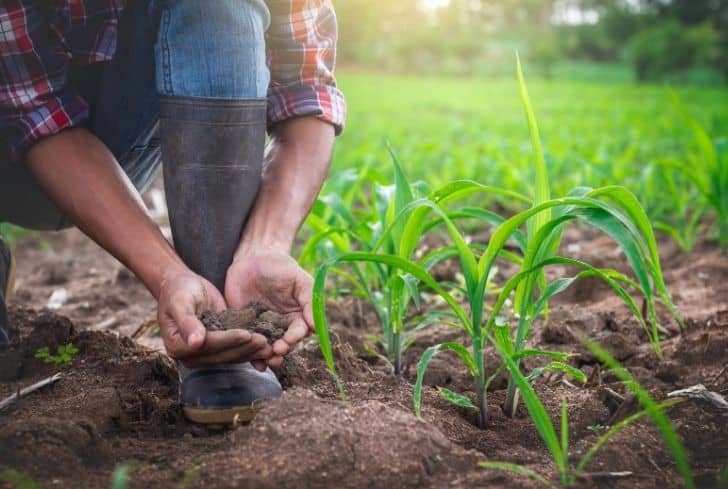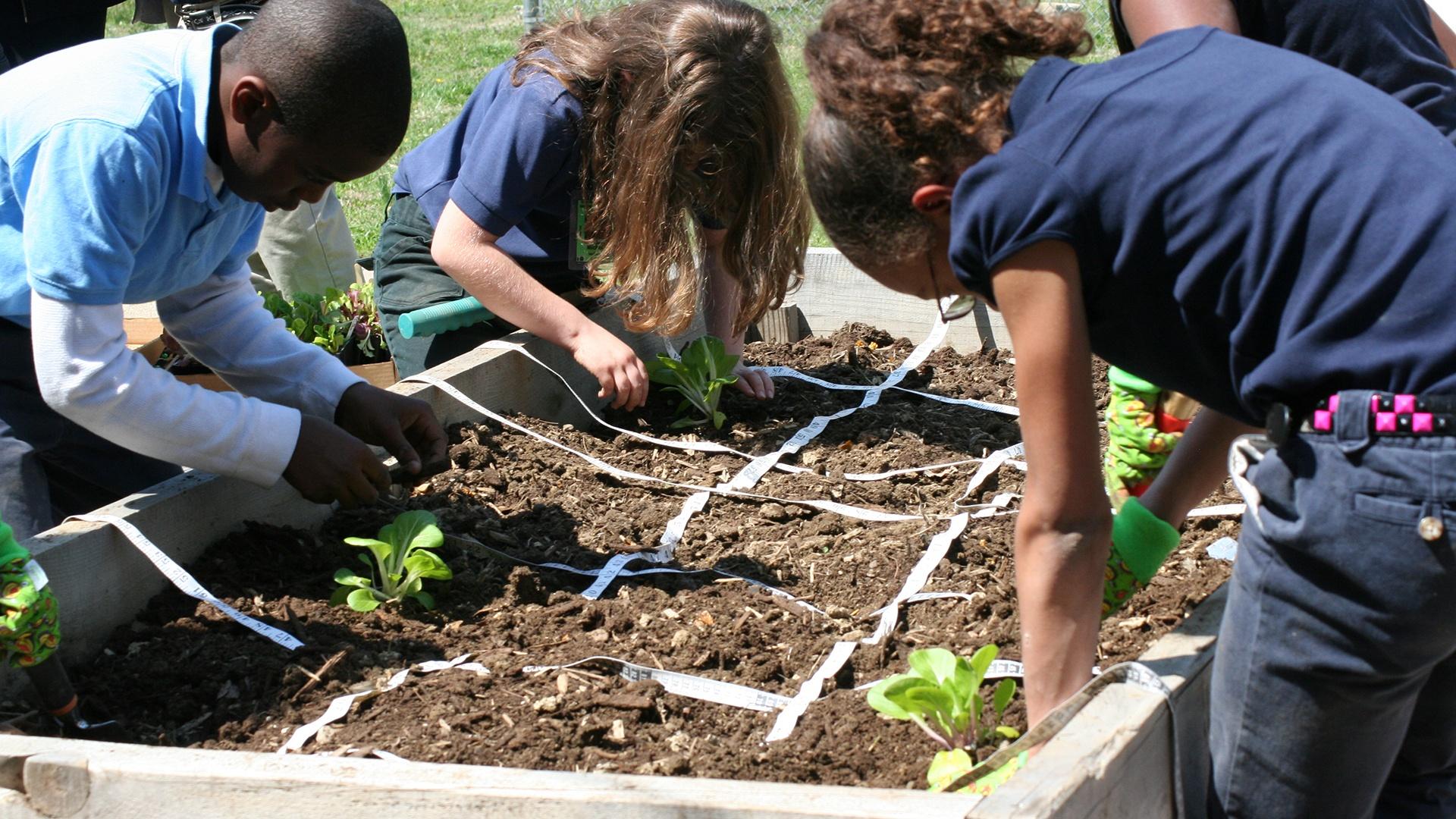
Cultivating a Greener Future: Exploring Sustainable Agriculture Farming Methods
The world is at a crossroads. Our current agricultural practices, while efficient in producing vast quantities of food, have come at a significant cost to the environment. Soil degradation, water pollution, greenhouse gas emissions, and biodiversity loss are just some of the challenges we face. But there’s a beacon of hope: sustainable agriculture. This approach offers a pathway to feed a growing population while preserving the planet for future generations. It’s not just about farming; it’s about a fundamental shift in how we relate to the land and the ecosystems that support us.
This article delves into the heart of sustainable agriculture, exploring the various methods and practices that are revolutionizing the way we grow our food. We’ll examine the principles that underpin this approach, the specific techniques employed, and the undeniable benefits it offers, both for the environment and for human well-being. Get ready to discover how we can cultivate a greener future, one sustainable farm at a time.
What is Sustainable Agriculture? The Core Principles
Sustainable agriculture is more than just a buzzword; it’s a holistic approach to farming that aims to produce food in a way that is environmentally sound, economically viable, and socially just. It’s about meeting the needs of the present without compromising the ability of future generations to meet their own needs. This means considering the long-term health of the soil, water, and ecosystems, while also ensuring the livelihoods of farmers and the well-being of communities.
Several core principles guide sustainable agriculture:
- Environmental Stewardship: Minimizing the environmental impact of farming practices, such as reducing pollution, conserving water, and protecting biodiversity.
- Economic Viability: Ensuring that farming operations are profitable and can provide a fair income for farmers.
- Social Responsibility: Supporting fair labor practices, promoting food security, and contributing to the well-being of rural communities.
- Resource Conservation: Using natural resources efficiently and sustainably, including soil, water, and energy.
- Biodiversity Enhancement: Promoting a diverse range of plants and animals on the farm to enhance ecosystem health and resilience.
These principles are interconnected and work together to create a resilient and regenerative agricultural system. It’s a constant cycle of observation, adaptation, and improvement, always striving to find a better balance between production and preservation.
Key Sustainable Agriculture Farming Methods
Now, let’s explore some of the specific methods and techniques that are at the heart of sustainable agriculture. These practices are not mutually exclusive; in fact, they often work best when used in combination, creating a synergistic effect that enhances the overall sustainability of the farm.
1. Crop Rotation
Crop rotation is a time-tested practice that involves planting different crops in a planned sequence on the same land. This simple yet powerful technique offers a multitude of benefits:
- Soil Health: Different crops have different nutrient requirements. Crop rotation helps to balance nutrient levels in the soil, preventing the depletion of any single nutrient. For example, planting a nitrogen-fixing crop like legumes (beans, peas, clover) can replenish nitrogen in the soil, reducing the need for synthetic fertilizers.
- Pest and Disease Control: Rotating crops disrupts the life cycles of pests and diseases that may be specific to certain crops. This reduces the need for pesticides and herbicides.
- Weed Management: Different crops have different growth habits and can compete with weeds in different ways. Crop rotation can help to suppress weed growth naturally.
- Erosion Control: Different crops have different root systems and can help to stabilize the soil and prevent erosion.
Crop rotation requires careful planning and a good understanding of the specific crops being grown. Farmers need to consider factors such as nutrient requirements, pest and disease susceptibility, and the timing of planting and harvesting. But the rewards – healthier soil, reduced pest problems, and increased yields – are well worth the effort.
2. Cover Cropping
Cover crops are plants that are grown primarily to improve soil health, rather than for harvest. They are planted between cash crops or during fallow periods. Cover cropping is like giving the soil a nutritious green smoothie. They offer a wealth of benefits, including:
- Soil Erosion Prevention: Cover crops protect the soil from wind and water erosion, especially during periods when the soil is not covered by cash crops.
- Soil Improvement: Cover crops add organic matter to the soil, improving its structure, water-holding capacity, and fertility.
- Weed Suppression: Cover crops can compete with weeds, reducing their growth and the need for herbicides.
- Pest and Disease Control: Some cover crops can help to suppress pests and diseases.
- Nutrient Cycling: Cover crops can absorb nutrients from the soil and make them available to cash crops.
Common cover crops include legumes (clover, alfalfa), grasses (rye, oats), and brassicas (radish, mustard). The choice of cover crop depends on the specific goals of the farmer and the characteristics of the soil and climate.
3. No-Till Farming
No-till farming, also known as zero-tillage, is a practice that involves planting crops directly into the soil without plowing or tilling. This method offers significant benefits for soil health and the environment:
- Reduced Soil Erosion: No-till farming leaves crop residue on the surface of the soil, which protects it from wind and water erosion.
- Improved Soil Structure: Tilling can disrupt the soil structure, leading to compaction and reduced water infiltration. No-till farming helps to maintain a healthy soil structure.
- Increased Water Infiltration and Retention: No-till farming improves the soil’s ability to absorb and retain water, reducing the need for irrigation.
- Reduced Greenhouse Gas Emissions: Tilling releases carbon dioxide into the atmosphere. No-till farming helps to sequester carbon in the soil.
- Reduced Fuel Consumption: No-till farming reduces the need for tractors and other equipment, leading to lower fuel consumption and reduced emissions.
No-till farming requires careful management, including the use of cover crops and herbicides to control weeds. However, the benefits for soil health, water conservation, and the environment make it a valuable tool for sustainable agriculture.
4. Integrated Pest Management (IPM)
Integrated Pest Management (IPM) is a holistic approach to pest control that emphasizes prevention and the use of multiple strategies to manage pests. IPM is not about eliminating pests completely; it’s about keeping pest populations below levels that cause economic damage. The core principles of IPM include:
- Prevention: Using cultural practices, such as crop rotation and cover cropping, to prevent pest problems.
- Monitoring: Regularly monitoring crops for pests and diseases.
- Identification: Accurately identifying pests and diseases.
- Decision-Making: Making informed decisions about pest control based on the level of pest infestation and the potential for economic damage.
- Control: Using a variety of control methods, including biological control, cultural practices, and, as a last resort, pesticides.
IPM aims to minimize the use of pesticides and to use them in a way that minimizes harm to the environment and human health. It’s a more sustainable and environmentally friendly approach to pest control than relying solely on chemical pesticides.
5. Organic Farming
Organic farming is a specific type of sustainable agriculture that emphasizes the use of natural inputs and the avoidance of synthetic fertilizers, pesticides, and genetically modified organisms (GMOs). Organic farmers focus on building healthy soil, promoting biodiversity, and minimizing environmental impact. Key practices in organic farming include:
- Composting: Using compost to add organic matter to the soil and improve its fertility.
- Manure Management: Using manure as a fertilizer, while carefully managing its application to avoid water pollution.
- Crop Rotation: Rotating crops to improve soil health and control pests and diseases.
- Cover Cropping: Using cover crops to improve soil health and suppress weeds.
- Biological Pest Control: Using beneficial insects and other organisms to control pests.
Organic farming is a highly regulated system, with strict standards for certification. Organic farmers must adhere to these standards to be certified and to sell their products as organic. Organic farming can be more labor-intensive than conventional farming, but it can also result in higher prices for the products.
6. Agroforestry
Agroforestry is the integration of trees and shrubs into agricultural systems. This can involve planting trees in fields, along field borders, or in woodlots. Agroforestry offers a wide range of benefits:
- Soil Conservation: Trees help to prevent soil erosion and improve soil structure.
- Water Conservation: Trees can help to reduce runoff and improve water infiltration.
- Carbon Sequestration: Trees absorb carbon dioxide from the atmosphere, helping to mitigate climate change.
- Biodiversity Enhancement: Trees provide habitat for wildlife and increase biodiversity on the farm.
- Income Generation: Trees can provide timber, fruit, nuts, and other products that can generate income for farmers.
Agroforestry is a versatile practice that can be adapted to a variety of climates and farming systems. It’s a win-win for farmers and the environment.
7. Water Management
Water is a precious resource, and sustainable agriculture emphasizes the efficient and responsible use of water. This includes:
- Irrigation Efficiency: Using efficient irrigation methods, such as drip irrigation and sprinkler systems, to minimize water loss.
- Water Harvesting: Collecting rainwater for irrigation and other uses.
- Soil Health: Improving soil health to increase its water-holding capacity.
- Crop Selection: Choosing crops that are well-suited to the local climate and water availability.
Sustainable water management is crucial for ensuring the long-term viability of agriculture and for protecting water resources.
The Benefits of Sustainable Agriculture
The adoption of sustainable agriculture practices offers a wide range of benefits, both for the environment and for human well-being. These benefits include:
Environmental Benefits:
- Improved Soil Health: Sustainable practices, such as crop rotation and cover cropping, improve soil structure, water-holding capacity, and fertility.
- Reduced Soil Erosion: Practices like no-till farming and agroforestry help to prevent soil erosion.
- Water Conservation: Efficient irrigation methods and improved soil health help to conserve water.
- Reduced Pollution: Sustainable practices reduce the use of synthetic fertilizers and pesticides, minimizing pollution of water and air.
- Enhanced Biodiversity: Sustainable practices, such as agroforestry and crop diversification, promote biodiversity.
- Climate Change Mitigation: Sustainable practices, such as no-till farming and agroforestry, can help to sequester carbon in the soil and reduce greenhouse gas emissions.
Economic Benefits:
- Increased Farm Profitability: Sustainable practices can reduce input costs, such as fertilizer and pesticides, and can also lead to higher yields.
- Improved Resilience: Sustainable farms are more resilient to climate change and other environmental challenges.
- Market Opportunities: There is growing demand for sustainably produced food, which can command premium prices.
- Long-Term Sustainability: Sustainable practices help to ensure the long-term viability of farming operations.
Social Benefits:
- Improved Food Security: Sustainable agriculture can increase food production and improve access to food.
- Healthier Food: Sustainable practices can lead to healthier food, with higher nutrient content and lower levels of pesticide residues.
- Improved Rural Livelihoods: Sustainable agriculture can create jobs and improve the livelihoods of farmers and rural communities.
- Community Well-being: Sustainable agriculture can contribute to the well-being of communities by promoting environmental stewardship and social responsibility.
Challenges and Considerations
While sustainable agriculture offers numerous benefits, it also presents some challenges and considerations. Transitioning to sustainable practices can require:
- Education and Training: Farmers need to learn about new practices and techniques.
- Financial Investment: Some sustainable practices may require initial investments in equipment or infrastructure.
- Market Access: Farmers need access to markets for sustainably produced food.
- Policy Support: Governments can play a role in supporting sustainable agriculture through policies, research, and financial incentives.
- Knowledge Exchange: Sharing knowledge and best practices among farmers is crucial.
Overcoming these challenges requires a collaborative effort involving farmers, researchers, policymakers, and consumers. It’s a journey, not a destination, and requires continuous learning and adaptation.
The Future of Farming: Embracing Sustainability
The future of farming is inextricably linked to sustainability. As the world faces the challenges of climate change, population growth, and environmental degradation, the need for sustainable agriculture has never been greater. By embracing sustainable practices, we can:
- Protect the Environment: Preserve our natural resources and protect biodiversity.
- Feed the World: Increase food production and improve food security.
- Support Farmers: Ensure the economic viability of farming operations.
- Create a Healthier Future: Improve the health and well-being of people and the planet.
The transition to sustainable agriculture is a complex undertaking, but it’s an essential one. It requires a fundamental shift in our thinking and our practices. It means moving away from the industrial model of farming that prioritizes short-term profits over long-term sustainability. It means embracing a more holistic approach that recognizes the interconnectedness of all things. It means working with nature, rather than against it.
The good news is that the transition to sustainable agriculture is already underway. Farmers around the world are adopting sustainable practices, and their efforts are making a difference. Consumers are increasingly demanding sustainably produced food, and this demand is driving change in the marketplace. Governments are beginning to recognize the importance of sustainable agriculture and are implementing policies to support it.
The journey towards a sustainable agricultural future will not be easy, but it is a journey worth taking. By working together, we can create a food system that is both productive and sustainable, that nourishes both people and the planet. The future of farming is in our hands. Let’s cultivate a greener future, together.


